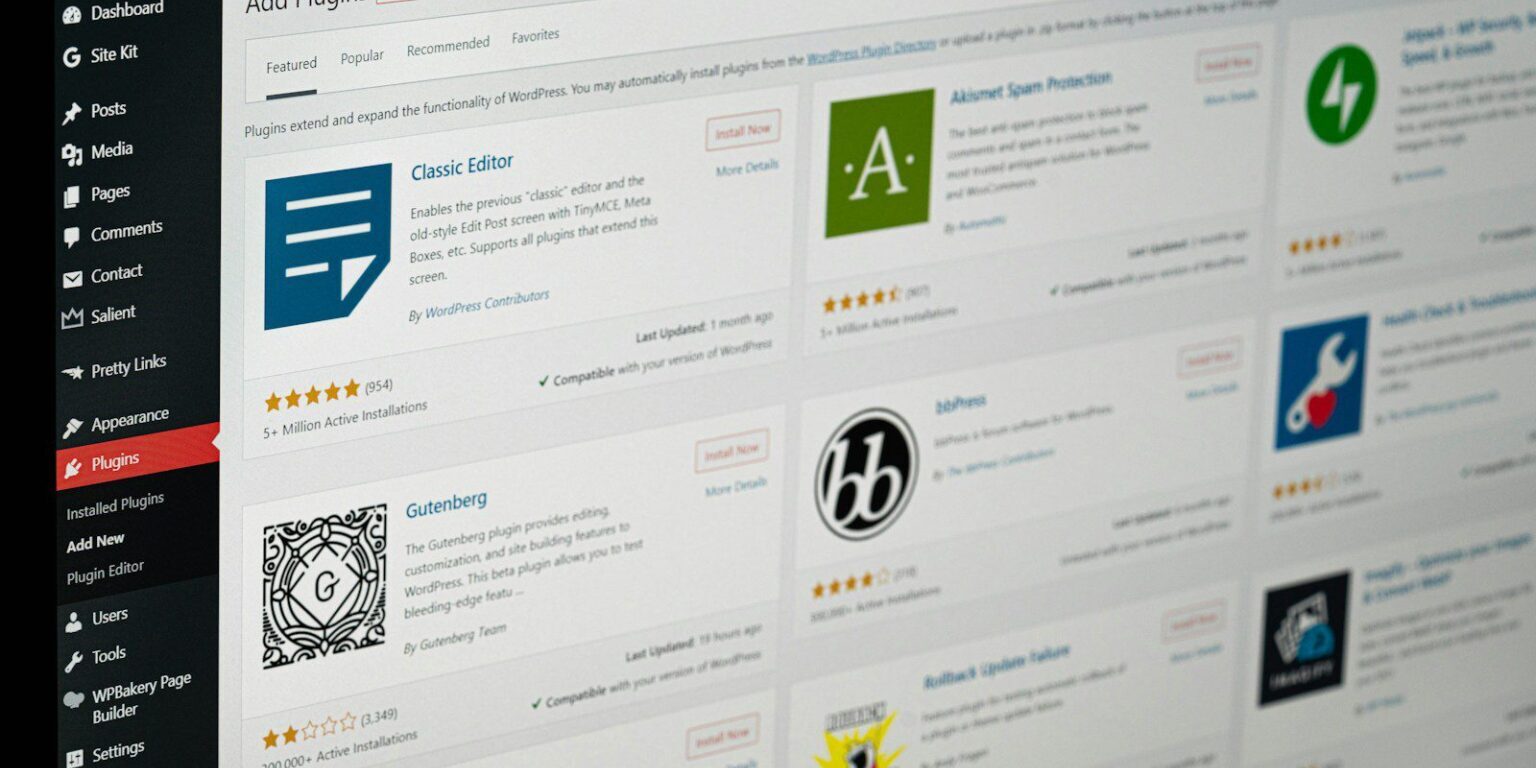When you run a small business, it’s tempting to solve every website issue yourself, especially when the fix looks as simple as installing a plugin. WordPress makes it easy to add features with just a few clicks. But plugins aren’t harmless add-ons. The wrong one can break your site, slow it down, or create problems you might not see until it’s too late.
As a web designer managing over 200 client websites, I’ve seen what can go wrong when a plugin is added without a second thought. It’s not about control—it’s about protecting your site and saving you time. Before you click “install,” consider checking in with the person who built or manages your site.
Plugins Can Cause Conflicts
Every plugin adds code to your site. That code might overlap or interfere with your theme or other plugins. One new addition can cause display issues, turn off a form, or even crash your entire site. Most of the time, these conflicts aren’t immediately apparent. I’ve seen clients lose hours—or even days—trying to figure out why something stopped working, when the cause was just one plugin installed without a review. A quick message to your designer could prevent that.
Your Site Might Already Have What You Need
I often get requests like, “Can I add a plugin for caching, SEO, or image optimization?”—not realizing those tools are already in place. It’s easy to overlook what’s running in the background, especially if you’re not logging into the backend daily. If you’re on a care plan, you might already have premium tools installed and licensed. Duplicating them not only adds unnecessary weight to your site, but it can also create conflicting settings and slow everything down.
Too Many Plugins Can Make Things Worse
There’s no perfect number of plugins, but the more you have, the more likely you’ll experience issues. Some plugins are lightweight and built for speed. Others are bulky and run constantly in the background. Add too many, and your website performance takes a hit. A slow site doesn’t just frustrate visitors—it affects your search ranking, too. If you’re unsure about whether a plugin will help or hurt, your designer can suggest the lightest, most reliable option—or an alternative that doesn’t require a plugin at all.
Security Risks Are Real
Some plugins come from reputable developers with a history of providing support. Others might be outdated, abandoned, or poorly coded. These are easy openings for hackers and malware. If you install something without checking for its update history or reviews, you’re taking a gamble. I keep a close eye on plugin security news and only install tools that are actively maintained and updated. Asking before you install helps keep your site—and your data—safe.
Not All Plugins Are Easy to Use
Some plugins are plug-and-play. Others may require additional configuration, custom settings, or even styling to match your website. If you activate something and don’t know how to complete the setup, you may end up with something that appears broken or doesn’t work at all. In the worst-case scenario, you might not even realize it’s not functioning. I can help configure the plugin, test it, and make sure it blends in with your site design.
You Could Break the Site Without Meaning To
Installing the wrong plugin can lead to what we call the “white screen of death“—a completely blank screen that locks you out of the dashboard. Or your homepage layout might suddenly change. Or your forms might stop working. These issues aren’t always immediate, and they don’t always display an error message. I’ve helped clients who didn’t know their contact forms stopped sending emails weeks earlier. A broken plugin can go unnoticed until it starts costing you leads or customers.
Free Doesn’t Always Mean Free
Many popular plugins offer both a free version and a paid version. It’s easy to get lured in by features that require an upgrade—or worse, to start relying on a tool that’s limited without warning. I’ve also seen cases where someone installs a plugin that works great for a few months, only to find it’s no longer supported unless they pay an annual fee. As your designer, I can let you know if I already have a license to cover it or if there’s a better free or one-time-cost alternative.
Your Designer Might Already Have a Better Solution
I often recommend plugins I’ve tested across dozens of sites. I know how they behave, how they affect speed, and what kind of support to expect if something goes wrong. If you let me know what you’re trying to accomplish, I may already have a tool that’s easier to manage, or I can custom-code a fix with no extra plugin needed.
Support Works Best When We’re on the Same Page
When something breaks, the first question I ask is: “Has anything been added or changed lately?” If I don’t know a plugin was installed, troubleshooting takes longer. That delay can affect your traffic, your revenue, and your peace of mind. When we’re working together on your site, it works best if I know what’s been added, updated, or adjusted. A quick check-in before making a change can help keep things running smoothly and reduce stress on both sides.
You Don’t Have to Figure It Out Alone
If you’re on one of my care plans, plugin support is included. That means you don’t have to guess whether something’s safe or effective—I’ll do that for you. And if you’re managing things on your own but want a second opinion, I’m always happy to take a look before you make a change. Your website is too essential to risk over a quick install. Asking first might save you time, money, and a whole lot of troubleshooting.

